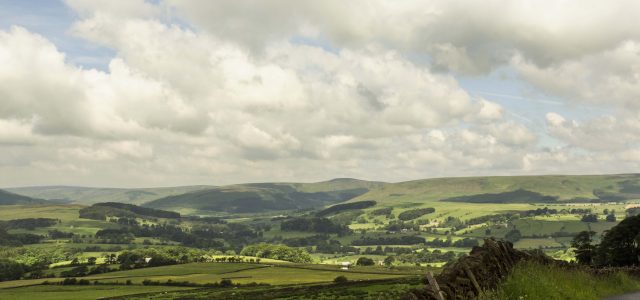
BOWLAND’S VILLAGES
We take a look at Bowland and the history behind some of the villages in this Area of Outstanding Natural Beauty
When Helen Shaw and I wrote and illustrated The Forest of Bowland, we were truly engaged in a labour of love. To bring to a wider audience the delights of an area which we had deeply admired for so long, was its own reward. Yet we realised that, in a very real sense, we had only touched the surface – the constraints of publication had left so much unsaid in the interests of brevity. “What’s your next book going to be?” was the reaction of many friends.
Bowland is defined as a geographical area especially by its high sweeping fells and delightful river valleys. We presented these features, but also gave cameos of individual people who live in Bowland – hill farmers, estate workers, artists. These and many others help to define the characteristic ethos of Bowland as a community. It is especially Bowland’s villages, varied, individual and of strong character, which deserve to have a voice, as they speak eloquently of the nature of this beautiful corner of North West England. We hope to bring Bowland to life through its villages – old buildings, families, estates and significant individuals.
The character of village life, in Bowland or anywhere else in the kingdom, has changed almost beyond recognition in the last two generations. People speak nostalgically of returning to the simple life when they retire, but we all know matters are not so simple. The continuing decline in public transport, availability of schools and health facilities, not to mention local groceries, are major factors to consider for anyone seeking to leave the town for the country. The alternative is to undertake regular long journeys in all weathers, including snow, on frequently untreated roads.
Yet, for the visitor, there is something immensely appealing about Bowland’s villages. We can forget the difficult logistics and, after a short drive, simply enjoy our visit. Just stroll down the quiet streets, breathe in the atmosphere, taste the centuries of heritage that led to the present day. The values of our old estate culture are still there, in old buildings and families, as well as – still more fascinatingly – the tales that the residents can tell you. Within Bowland, as many will know, Downham and Slaidburn are still estate villages, and Bolton-by-Bowland is an estate in part.
Quite rightly, there is a growing recognition among many village communities that this is the right time to collate, and indeed celebrate, their distinctive identities. Slaidburn, especially, now has an active Heritage Centre and Chipping Local History Society produced a booklet, ‘Longer Sen’, on several occasions from 1989 to 2009. The years between the world wars, when the villages still retained much of the appearance of Victorian days, are within living memory of some and have been partly written down or captured by photography. We have some great advantages today through the IT revolution, which has enabled the storage, sharing and distribution of information in many new ways. A little patient research, if you are directed to the right sources, can uncover a wealth of old data – pamphlets, limited edition booklets, photographs and postcards. How quickly such a search can become a quest!
Local history is a fascinating and absorbing subject and may also develop a national dimension, as in the association of King Henry VI with Bolton-by-Bowland.
For those who wish to delve into this well of history and society, or simply to enjoy a series of delightful days out, visit any of Bowland’s beautiful villages.
Andrew Stachulski and Helen Shaw are the authors of ‘The Forest of Bowland’
www.merlinunwin.co.uk

